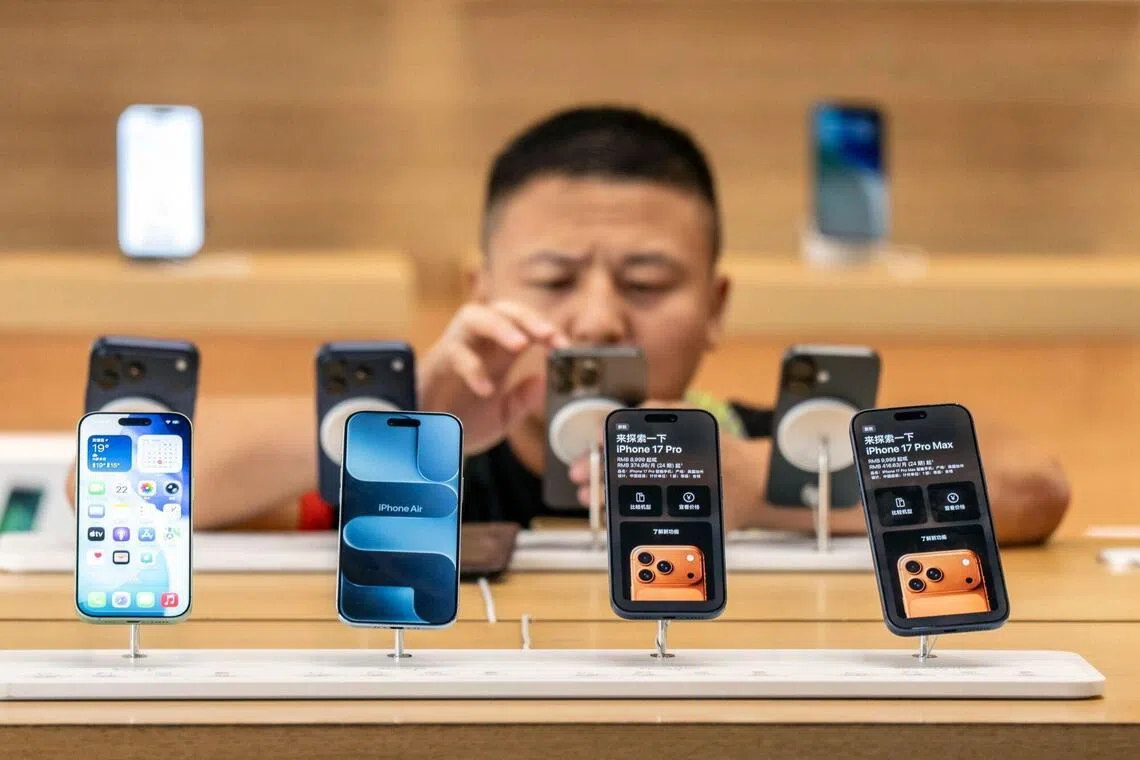Apple sees blockbuster holiday season on new iPhones, driving up shares
Sign up now: Get ST's newsletters delivered to your inbox

Apple said it expects iPhone revenue to grow by double-digits year over year in the December quarter.
PHOTO: BLOOMBERG
Follow topic:
SAN FRANCISCO – Apple predicted a major sales surge during the holiday season after releasing new iPhones, helping assure investors that its flagship product remains a growth engine.
Revenue in the fiscal first quarter, which runs to December, will rise by 10 per cent to 12 per cent, chief financial officer Kevan Parekh said during a conference call with analysts on Oct 30. Analysts had predicted just 6 per cent on average.
“We expect iPhone revenue to grow double-digits year over year, which would be our best iPhone quarter ever,” he said.
The outlook signals that Apple is navigating its way through a range of global challenges, including trade tensions, weakness in China and delays developing artificial intelligence features.
With the company’s latest iPhone release in September, Apple updated the designs and introduced a new ultrathin model called the Air. The line-up remains the company’s biggest moneymaker, accounting for roughly half of its revenue.
Apple shares gained more than 4 per cent in late trading on Oct 31. They had been up 8.4 per cent in 2025 through the close.
In the fiscal fourth quarter, which ended Sept 27, sales rose 7.9 per cent to US$102.5 billion. That slightly beat the US$102.2 billion average estimate. Earnings rose to US$1.85 a share, topping the average estimate of US$1.77.
Apple benefited from stronger-than-expected services growth in the period, helping offset a slowdown in China. The Mac and wearables division also performed better than anticipated.
Tariffs added US$1.1 billion in expenses during the quarter, in line with Apple’s expectations. The company expects US$1.4 billion in tariff costs in the December period.
Revenue from greater China fell 3.6 per cent to US$14.5 billion last quarter, well short of the US$16.4 billion that analysts projected. The company faces mounting competition from local smartphone providers and has struggled to offer artificial intelligence features in the country. Still, chief executive Tim Cook said he believes Apple will return to growth in the region during the current quarter.
Revenue from the iPhone gained 6.1 per cent to US$49 billion in the September period, helped by the new models. Still, that was just short of the US$49.3 billion that analysts projected. Apple said it faced supply constraints, which may have limited growth.
The quarter included roughly two weeks of iPhone 17 availability, and initial demand appeared strong – with sellouts reported across Apple retail stores and third-party channels. Most buyers opted for higher-end iPhone 17 Pro models, helping boost Apple’s average selling price. The US$999 iPhone Air – more expensive than the model it replaced – also helped on this front.
Services remained Apple’s fastest-growing segment last quarter, with revenue rising 15 per cent to US$28.8 billion.
Despite the healthy growth, the services business continues to face challenges from regulators seeking to change App Store policies, which could affect software and subscription revenue. However, Apple secured a recent legal victory when a judge declined to dismantle its US$20 billion-a-year search deal with Alphabet’s Google. BLOOMBERG

